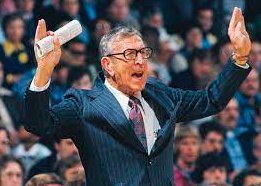Random Thoughts on Planning & Programming, Part 1

1. Great Coaching and Execution Are More Important Than The Program
A good program coached really well and executed with precision is FAR more effective than the BEST program that is coached lazily and executed haphazardly. It’s important to understand and remind yourself of this both when you’re writing programs, but also when you’re on the floor working with athletes.
It’s really easy to second-guess and overanalyze the minutiae and every single detail of the program. I find myself doing this often, and I need to remind myself that ultimately it’s more important that I coach my face off, and that the exercises or drills are done correctly. I could obsess all day over whether or not I should program forward or reverse lunges but in the grand scheme of things what matters far more is how they’re being performed.
This isn’t to say you shouldn’t put a lot of thought into the programs you write (whether it be sprinting, lifting, throwing, etc) – of course you should! However, the ability to write exceptional programs is going to come from both experience and years of work spent on the back end – studying in all its forms. Write the best program you can with the knowledge and experience you have currently.

2. Debriefs and audits are crucial.
“Left to their own devices, things move in circles.”
Are you improving as a coach? Are your programs better? You must constantly evaluate and re-evaluate yourself and your program writing. Go back and look at old programs. If you don’t shake your head and/or laugh at a program you wrote a year ago, you haven’t progressed like you should have.
3. Create Progression/Regression Continuums
You should take the time to write down (and see above: constantly re-evaluate and tweak) your progression and regression schemes for every single exercise: squats, plank variations, etc. Same goes for throwing and hitting drills. This will save you a lot of time when it’s time to write an athlete’s next program. It’s also crucial for my next point.
4. You Need To Have A Plan B and C At All Times
“You plan, God laughs.”
In order to have a Plan B and C, you need to develop a deep, intimate understanding. You have to be able to pivot, and pivot again. Athlete is fatigued? Tweaked their ankle at practice? You need to be able to think on your feet and ensure the best training session for that day for that athlete can be accomplished.
You need to always have Plan B and C, you don’t want to end up like George Costanza.
